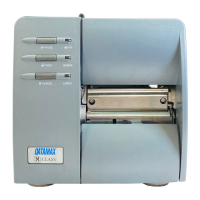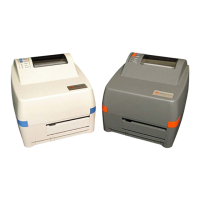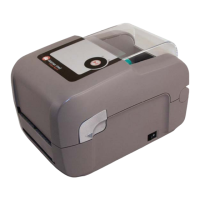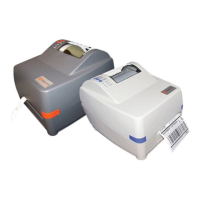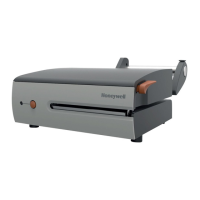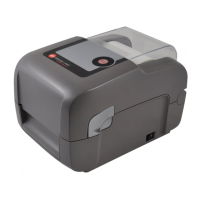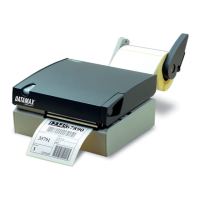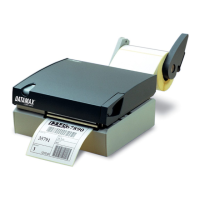Chapter 6 – Troubleshooting 68
6
6
6
.
.
.
3
3
3
H
H
H
e
e
e
x
x
x
D
D
D
u
u
u
m
m
m
p
p
p
M
M
M
o
o
o
d
d
d
e
e
e
The Hex Dump Mode is a useful tool for diagnosing problems, including communication and DPL
syntax errors, allowing a comparison of input strings (sent by host) to output data (received by
printer). To decode this information, the Class Series 2 Programmer’s Manual is an essential
reference. This output can be used for debugging the label format. In addition, by repeatedly
sending a format, this mode can uncover handshaking problems (if they exist). Handshaking
problems are identified by sections of missing data in the character string.
To print the Hex Dump Label:
Non-display printers: With the printer loaded with media (at least 4 inches wide) and ribbon (if
printing with thermal transfer media). Turn on the printer, when all three lights turn on press and
hold the
FEED
button. Continue holding the
FEED
button until the
STOP
light turns off.
Now, all data received by the printer will be output in hexadecimal code, along with the printable
ASCII equivalents, as shown below. To exit Hex Dump Mode, simply turn the printer off and then
back on.
Display-equipped printers:
To begin, go to the Diagnostics menu and enable Hex Dump Mode;
see Section 4.5. Exit the menu and save the changes. Now, ‘HEX DUMP MODE’ will be indicated by
the display and all data sent to the printer will now be output in hexadecimal code, along with the
printable ASCII equivalents, as shown below. To exit Hex Dump Mode, re-enter the Diagnostics
Menu and disable the Hex Dump Mode, exit the menu, then save the changes.
The figure below is a sample Hex Dump Label. After sending a label format to the printer, the hex
code output will be immediate. As a final note, many software programs use bit mapping to
construct the label, making diagnosis difficult. Contact Datamax-O’Neil Technical Support with any
questions.
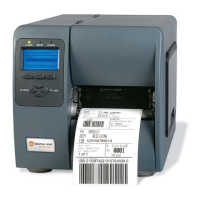
